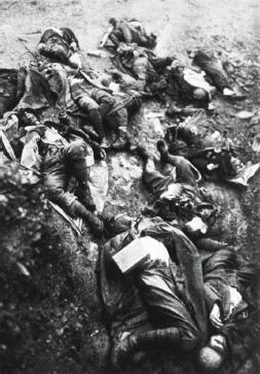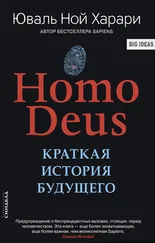The cold-water experiment is so simple, yet its implications shake the core of the liberal world view. It exposes the existence of at least two different selves within us: the experiencing self and the narrating self. The experiencing self is our moment-to-moment consciousness. For the experiencing self, it’s obvious that the ‘long’ part of the cold-water experiment was worse. First you experience water at 14°C for sixty seconds, which is every bit as bad as what you experience in the ‘short’ part, and then you must endure another thirty seconds of water at 15°C, which is not quite as bad, but still far from pleasant. For the experiencing self, it is impossible that adding a slightly unpleasant experience to a very unpleasant experience will make the entire episode more appealing.
However, the experiencing self remembers nothing. It tells no stories, and is seldom consulted when it comes to big decisions. Retrieving memories, telling stories and making big decisions are all the monopoly of a very different entity inside us: the narrating self. The narrating self is akin to Gazzaniga’s left-brain interpreter. It is forever busy spinning yarns about the past and making plans for the future. Like every journalist, poet and politician, the narrating self takes many short cuts. It doesn’t narrate everything, and usually weaves the story only from peak moments and end results. The value of the whole experience is determined by averaging peaks with ends. For example, in the short part of the cold-water experiment, the narrating self finds the average between the worst part (the water was very cold) and the last moment (the water was still very cold) and concludes that ‘the water was very cold’. The narrating self does the same thing with the long part of the experiment. It finds the average between the worst part (the water was very cold) and the last moment (the water was not so cold) and concludes that ‘the water was somewhat warmer’. Crucially, the narrating self is duration-blind, giving no importance to the differing lengths of the two parts. So when it has a choice between the two, it prefers to repeat the long part, the one in which ‘the water was somewhat warmer’.
Every time the narrating self evaluates our experiences, it discounts their duration, and adopts the ‘peak-end rule’ – it remembers only the peak moment and the end moment, and evaluates the whole experience according to their average. This has far-reaching impact on all our practical decisions. Kahneman began investigating the experiencing self and the narrating self in the early 1990s when, together with Donald Redelmeier of the University of Toronto, he studied colonoscopy patients. In colonoscopy tests, a tiny camera is inserted into the guts through the anus, in order to diagnose various bowel diseases. It is not a pleasant experience. Doctors want to know how to perform the test in the least painful way. Should they speed up the colonoscopy and cause patients more severe pain for a shorter duration, or should they work more slowly and carefully?
To answer this query, Kahneman and Redelmeier asked 154 patients to report the pain during the colonoscopy at one-minute intervals. They used a scale of 0 to 10, where 0 meant no pain at all, and 10 meant intolerable pain. After the colonoscopy was over, patients were asked to rank the test’s ‘overall pain level’, also on a scale of 0 to 10. We might have expected the overall rank to reflect the accumulation of minute-by-minute reports. The longer the colonoscopy lasted, and the more pain the patient experienced, the higher the overall pain level. But the actual results were different.
Just as in the cold-water experiment, the overall pain level neglected duration and instead reflected only the peak-end rule. One colonoscopy lasted eight minutes, at the worst moment the patient reported a level 8 pain, and in the last minute he reported a level 7 pain. After the test was over, this patient ranked his overall pain level at 7.5. Another colonoscopy lasted twenty-four minutes. This time too peak pain was level 8, but in the very last minute of the test, the patient reported a level 1 pain. This patient ranked his overall pain level only at 4.5. The fact that his colonoscopy lasted three times as long, and that he consequently suffered far more pain on aggregate, did not affect his memory at all. The narrating self doesn’t aggregate experiences – it averages them.
So what do the patients prefer: to have a short and sharp colonoscopy, or a long and careful one? There isn’t a single answer to this question, because the patient has at least two different selves, and they have different interests. If you ask the experiencing self, it will probably prefer a short colonoscopy. But if you ask the narrating self, it will vote for a long colonoscopy because it remembers only the average between the worst moment and the last moment. Indeed, from the viewpoint of the narrating self, the doctor should add a few completely superfluous minutes of dull aches at the very end of the test, because it will make the entire memory far less traumatic. 15
Paediatricians know this trick well. So do vets. Many keep in their clinics jars full of treats, and hand a few to the kids (or dogs) after giving them a painful injection or an unpleasant medical examination. When the narrating self remembers the visit to the doctor, ten seconds of pleasure at the end of the visit will erase many minutes of anxiety and pain.
Evolution discovered this trick aeons before the paediatricians. Given the unbearable torments women undergo at childbirth, you might think that after going through it once, no sane woman would ever agree to do it again. However, at the end of labour and in the following days the hormonal system secretes cortisol and beta-endorphins, which reduce the pain and create a feeling of relief and sometimes even of elation. Moreover, the growing love towards the baby, and the acclaim from friends, family members, religious dogmas and nationalist propaganda, conspire to turn childbirth from a terrible trauma into a positive memory.

An iconic image of the Virgin Mary holding baby Jesus. In most cultures, childbirth is narrated as a wonderful experience rather than as a trauma.
Virgin and Child , Sassoferrato, Il (Giovanni Battista Salvi) (1609–85), Musee Bonnat, Bayonne, France © Bridgeman Images.
One study conducted at the Rabin Medical Center in Tel Aviv showed that the memory of labour reflected mainly the peak and end points, while the overall duration had almost no impact at all. 16In another research project, 2,428 Swedish women were asked to recount their memories of labour two months after giving birth. Ninety per cent reported that the experience was either positive or very positive. They didn’t necessarily forget the pain – 28.5 per cent described it as the worst pain imaginable – yet it did not prevent them from evaluating the experience as positive. The narrating self goes over our experiences with a sharp pair of scissors and a thick black marker. It censors at least some moments of horror, and files in the archive a story with a happy ending. 17
Most of our critical life choices – of partners, careers, residences and holidays – are taken by our narrating self. Suppose you can choose between two potential holidays. You can go to Jamestown, Virginia, and visit the historic colonial town where the first English settlement on mainland North America was founded in 1607. Alternatively, you can realise your number one dream vacation, whether it is trekking in Alaska, sunbathing in Florida or having an unbridled bacchanalia of sex, drugs and gambling in Las Vegas. But there is a caveat: if you choose your dream vacation, then just before you board the plane home, you must take a pill which will wipe out all your memories of that vacation. What happened in Vegas will forever remain in Vegas. Which holiday would you choose? Most people would opt for colonial Jamestown, because most people give their credit card to the narrating self, which cares only about stories and has zero interest in even the most mind-blowing experiences if it cannot remember them.
Читать дальше
Конец ознакомительного отрывка
Купить книгу













